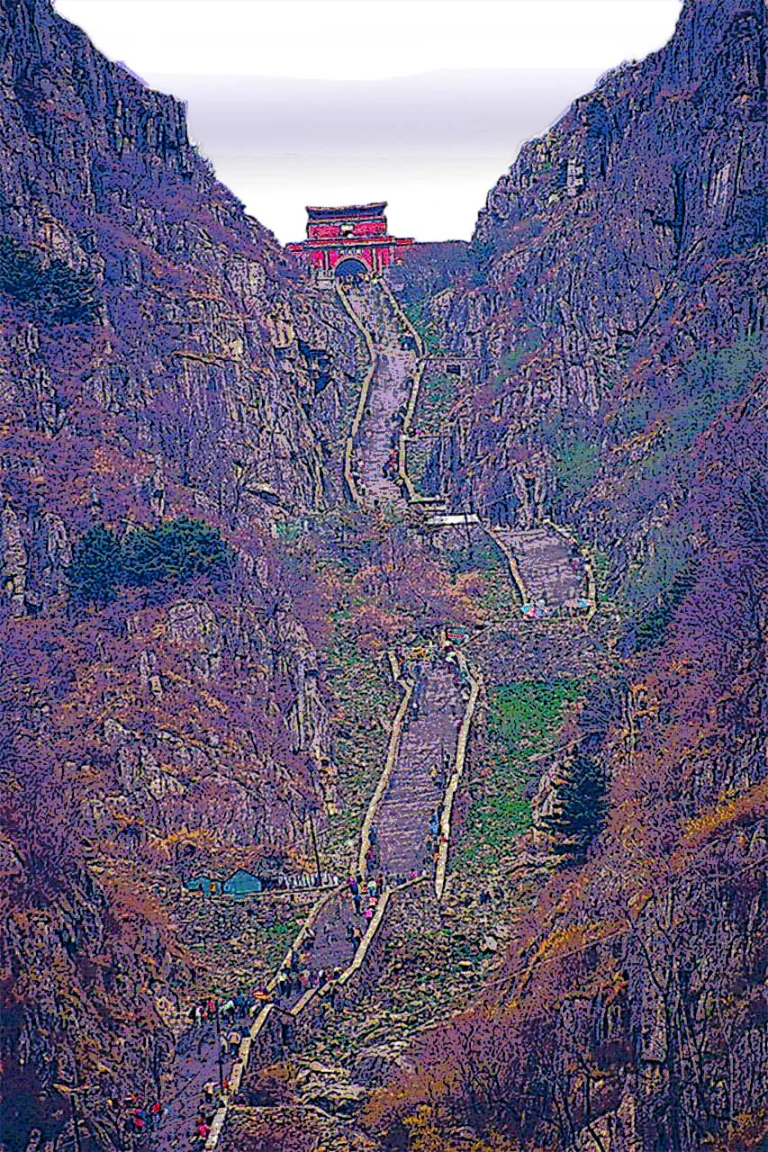How shall I describe Taishan? Everywhere Shangdong is green and flourishing.
In it the Creator has concentrated all that is bountiful and beautiful. Its northern and southern slopes divide the dawn from the dark.
Where layered clouds begin, the climber’s chest heaves, and birds flying home appear suddenly before his straining eyes.
One day I shall reach its highest peak and at a single glance see all the other mountains grown tiny beneath me.
杜甫
望岳
岱宗夫如何 齐鲁青未了
造化钟神秀 阴阳割昏晓
荡胸生层云 决眥入归鸟
会当凌绝顶 一览众山小
Dùfǔ
Wàng yuè
Dàizōng fū rúhé qílǔ qīng wèiliǎo
zàohuà zhōng shénxiù yīnyáng gē hūn xiǎo
dàng xiōng shēng céng yún jué zì rù guī niǎo
huì dāng líng juédǐng yīlǎn zhòng shān xiǎo
The poem’s meaning
Nothing ever seems quite the same. And having previously translated Du Fu’s View of Taishan, two years ago, I thought it time to revisit.
This poem was written early in Du Fu’s illustrious career. Perhaps at the age of 24 or 25, when he took and failed the imperial examination of 735. If so, then the poem is an allegory for Du Fu’s small stature at the time and his hope to climb to the lofty summit of literature. It was a goal he would achieve, becoming along with Li Bai one of China’s most revered poets.
One can certainly over explain a poem and lose both the listener and the meaning. Still, it is important to understand some of the background to the poem.
Mt. Tai, 泰山
The title is Wang Yue which is another name for Taishan or Mt. Tai. Similarly, Daizong of the first line is another reference to Taishan.
Taishan or Mount Tai is known as the eastern mountain of the Five Great Mountains of China, a holy place in Taoism, which regards the mountain as the guardian of peace in the world. Symbolically, it is associated with sunrise, birth, and renewal. An ambitious man would certainly wish to scale its summit.
Qilu, in the second half of the first line, is a reference to the ancient Chinese states of Qi and Lu, of the Zhou dynasty (c. 1046–256 BC). The north side of the mountain is in Qi, the south Lu. Combined, the two characters are shorthand for Shangdong Province where Mt. Tai is located.
The familiar Yin and Yang of line two reference both the cosmic forces of the universe and the fact that the mountain divides the north and south, dawn and dusk.
Climbing Mt. Tai
Climbing Mt. Tai is no easy task, even for a young poet. Even today, it is a strenuous walk of 6666 steps on a paved path climbing for almost 5,000 feet from entrance to summit. The steep hike is a challenge even for the fit, the lungs will ache, and the trip can take five hours. If you are ambitious, then you will want to climb the mountain at night, and as dawn breaks see the sun rise from a sea of clouds.









